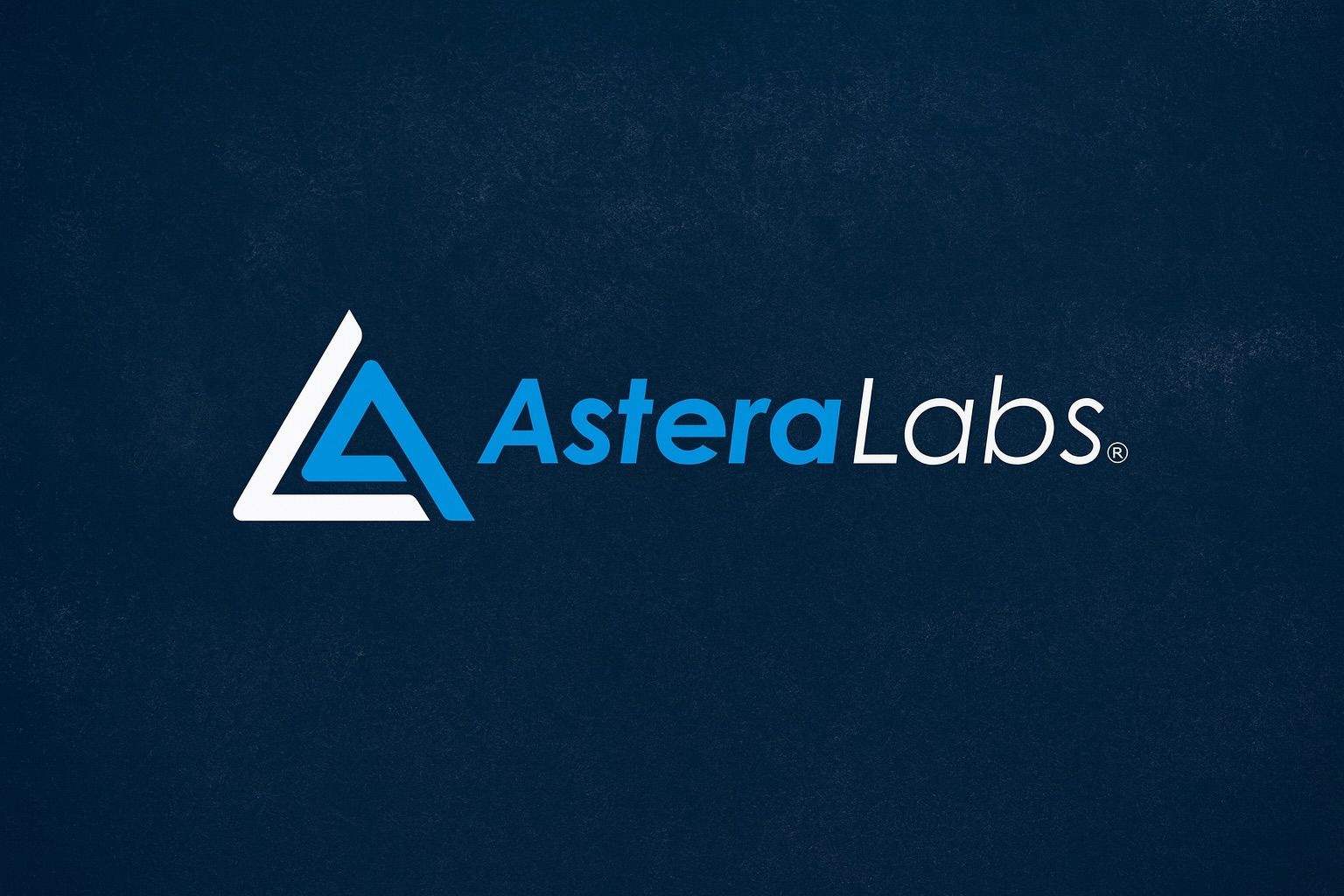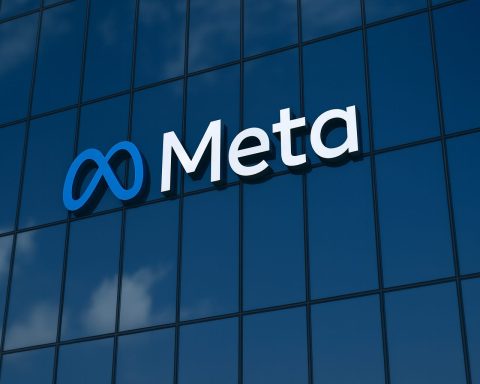- Massive stock surge: Astera Labs (NASDAQ: ALAB) has rallied more than 220 % over the last six months, lifting its market value to roughly $33 billion [1]. Year‑to‑date the stock is up about 73 %, while a 52‑week range of $47.12–$262.90 shows how volatile the ride has been [2] [3].
- October volatility: The week of 6 October 2025 brought more fireworks. On 6 Oct the share price rallied 14 % to roughly $229, pushing the six‑month gain beyond 220 % [4]. This came after a 19 % decline the prior week when Federal Reserve commentary triggered a growth‑stock sell‑off [5].
- Explosive fundamentals: In fiscal Q2 2025 the company reported revenue of $191.9 million, up 150 % year‑over‑year, gross margin 75.8 % and non‑GAAP EPS of $0.44 [6]. Operating cash flow reached $135.4 million and the company ended the quarter with $1.07 billion in cash [7].
- Upcoming catalysts: Astera forecasts Q3 2025 revenue of $203 million–$210 million with non‑GAAP EPS around $0.38–$0.39 [8]. Consensus estimates call for full‑year EPS of $1.58 and revenue of $766.55 million, implying ~88 % and 93 % growth respectively [9].
- Analyst sentiment: According to MarketBeat, 23 analysts covering the stock yield a moderate buy consensus. The average 12‑month price target is about $160, implying downside from the current price. Targets range from $82 to $275 [10].
- High valuation: The stock trades around 300–350 times trailing earnings and over 50 times sales, well above semiconductor peers [11]. Simply Wall St estimates the fair value at $186; thus the Oct‑6 closing price was roughly 7.8 % above its fair‑value calculation [12].
- Picks‑and‑shovels AI play: Zacks named Astera Labs its “Bull of the Day”, arguing the company provides the essential interconnect “picks and shovels” for AI data‑center build‑outs [13]. Astera sells Aries PCIe/CXL retimers, Scorpio fabric switches, Taurus active cables, Leo CXL memory controllers and the COSMOS software suite [14] [15].
- Deep partnerships: The company’s close ties with NVIDIA (NVLink collaboration), AMD and Alchip position it at the heart of emerging UALink open‑standard efforts [16] [17]. Tech giants such as Microsoft, Google, Amazon and Meta are investing heavily in rack‑scale AI, creating a massive addressable market. [18] [19].
- Risks: The meteoric share price leaves Astera exposed to valuation compression; the company’s customer concentration (majority of revenue from a few hyperscalers), competitive pressure from Broadcom, Marvell, Credo and incumbent switch vendors, and potential macro‑driven pullbacks remain key risks [20]. Insiders sold more than 1.49 million shares worth $232 million in the last quarter [21].
Stock Performance & Financial Movements
Astera Labs, a fabless semiconductor firm specializing in high‑speed connectivity chips for AI data‑centers, has been one of Wall Street’s hottest debutants. After pricing its IPO at $36 per share in March 2024, the stock skyrocketed to an intraday high of $262.90 on 18 September 2025, a gain of about 440 % [22]. Recent trading has been volatile. The stock slumped nearly 19 % in late September after Federal Reserve chair Jerome Powell warned that equities looked expensive; the drop reflected valuation concerns rather than company‑specific problems [23]. Shares quickly rebounded when Zacks Research highlighted the company as its “Bull of the Day,” sending the stock up 13 % on 8 September and helping extend a six‑month gain to more than 220 % [24].
Fundamentally, the company has delivered eye‑popping growth. In fiscal Q2 2025 (quarter ended July 31), revenue leapt 150 % year‑over‑year to $191.9 million and non‑GAAP gross margin stayed high at 76 % [25]. Non‑GAAP net income more than tripled to $78 million, equating to $0.44 per share, beating analyst expectations [26]. Operating cash flow hit $135.4 million and free cash flow $133 million, boosting cash reserves to $1.07 billion [27] [28]. For the current quarter, management expects revenue between $203 million and $210 million and non‑GAAP EPS around $0.38–$0.39 [29]. Wall Street consensus for full‑year FY25 calls for revenue near $766 million and EPS of $1.58, representing roughly 93 % and 88 % growth respectively [30].
Recent News & Developments (late September–early October 2025)
- Positive coverage lifts shares: On 8 September, Zacks Research highlighted Astera Labs as its “Bull of the Day,” praising its role as a critical picks‑and‑shovels provider for AI infrastructure. The report underscored the company’s specialized connectivity chips and its strong relationships with hyperscalers, which analysts expect will drive robust top‑ and bottom‑line growth [31]. The Motley Fool noted that the bullish call and favorable macro sentiment helped the stock surge 13 % that day [32].
- PFG Investments stake: On 6 October MarketBeat reported that PFG Investments LLC acquired 2,637 ALAB shares (~$238,000) in Q2 2025. The article also noted that institutional investors own roughly 60 % of the company; insiders sold 1.49 million shares worth $232 million in the prior 90 days [33] [34].
- Volatility after Fed comments: Late September saw a sharp pullback when Fed chair Powell suggested equities may be overvalued. A Motley Fool article explained that the 19 % decline was due to valuation fears and macro uncertainty, not company‑specific news [35]. Shares have since recouped much of the drop.
- Market metrics: On 3 October, Zacks noted that the stock closed at $200.74, down 4.2 % on the day yet still up 11.5 % over the prior month, outperforming both the tech sector and the S&P 500 [36]. Another day later, the American Association of Individual Investors (AAII) reported the share price at $228.91 and a lofty P/E ratio around 334 compared with the semiconductor industry median of 36.7 [37].
Analyst Ratings & Price Forecasts
Astera Labs has drawn enthusiastic yet cautious coverage. MarketBeat lists 23 analyst reports with a moderate buy consensus and an average price target of $159.83 [38]. The highest target, from Citi’s Atif Malik, sits at $275, while the lowest (Susquehanna) is $82, implying wide disagreement about future returns [39]. TD Cowen initiated coverage on 1 October with a hold rating and $200 target, while Deutsche Bank and Morgan Stanley maintain buy/outperform ratings and recently raised their targets to around $200 [40]. According to Zacks, forward P/E stands around 132, with a price/earnings‑to‑growth (PEG) ratio of 2.77, compared with the software industry average of 2.25 [41]. Simply Wall St suggests the stock trades about 7.8 % above its fair value [42].
Business Fundamentals & Product Pipeline
Astera Labs designs chips and modules that eliminate communication bottlenecks in AI servers. Its flagship Aries retimers and Scorpio series fabric switches extend high‑bandwidth PCI Express (PCIe) and Compute Express Link (CXL) signals across long distances, allowing large clusters of GPUs and CPUs to function as a single “super chip.” The company also offers Taurus active copper cables, Leo CXL memory controllers and the COSMOS management software suite [43] [44]. These products are essential for building rack‑scale AI infrastructure, especially as hyperscalers adopt multi‑rack interconnected systems.
Q2 results showed scorching demand for the Scorpio P‑series retimers and active cables, while management highlighted the upcoming Scorpio X‑series for PCIe 6 and UALink networks [45]. Partnerships remain a core driver: Astera co‑develops NVLink retimers with NVIDIA to connect H100 and H200 GPUs, works with Alchip to integrate custom AI‑compute ASICs, and is a founding member of the UALink consortium led by AMD, Broadcom, Cisco, Google, Hewlett Packard Enterprise and others [46] [47]. TS2.tech notes that the company’s technology enables data‑center interconnects for leading hyperscalers, and it expects the total addressable market (TAM) for AI connectivity to grow from $17.2 billion in 2024 to $27.4 billion by 2027 [48] [49].
Expert Commentary & Market Positioning
Financial writers consistently frame Astera Labs as a “picks‑and‑shovels” play on the AI boom. Zacks observed that while Meta, Microsoft and Alphabet are spending hundreds of billions to win the AI arms race, “investors may prefer to own the infrastructure suppliers” like Astera [50]. The Motley Fool’s Keith Noonan wrote that the company has “a clear‑cut lead in a niche tech category that could have a huge runway for long‑term growth,” adding that investors have bid up the stock because of its strong results and guidance [51]. Stock‑analysis site Tickeron called the company an AI connectivity leader and noted that the stock’s 358 % rally from April to September marked “a transformation in investor sentiment” [52]. However, Tickeron also highlighted that competitors like Broadcom, Marvell and Intel are aggressively developing their own retimers and switches, and that the market may become crowded [53].
From a technical viewpoint, analysts regard Astera Labs as highly volatile. AAII assigned the stock a Relative Price Strength score of 98, reflecting its strong momentum, but gave it a value grade of F, noting the P/E ratio is nearly 10× the industry median [54] [55]. The TS2.tech report cautioned that the stock’s valuation—price‑to‑sales ratio around 58 and P/E around 347—is “priced for perfection,” leaving little margin for error [56]. Insider selling and the expiration of lock‑up periods add to the overhang [57].
Competitor Context & Market Landscape
Astera operates in a rapidly growing yet competitive segment. Its direct rivals include Broadcom’s PCIe/CXL retimers and Tomahawk switches, Marvell’s Alaska and Novalink products, Credo’s HiWire active cables, and Intel’s Xeon/CXL controllers [58]. Some customers may also design in‑house connectivity chips. However, Astera differentiates itself by being fabless and highly focused, using TSMC for manufacturing and leaving design resources free to innovate. The TAM for AI chips is projected to rise from $67.9 billion in 2024 to $423.8 billion by 2030, and connectivity solutions may grow even faster because each server rack needs multiple retimers, switches and cables [59]. Participation in UALink, an open standard backed by AMD, Microsoft, Google, Cisco and others, could cement Astera’s role at the center of next‑generation “scale‑up” AI architectures [60].
Risks and Upcoming Catalysts
Valuation risk: With the stock trading at 300+ times earnings, even minor disappointments could trigger sharp corrections. The high multiple rests on expectations that Astera will sustain triple‑digit revenue growth and maintain its technological edge. Any signs of slowing momentum, margin compression or customer pushback could compress the valuation [61]. Macro headwinds—higher interest rates, reduced AI spending or economic slowdown—could also deflate high‑growth stocks, as evidenced by the September pullback [62].
Customer concentration and competition: A handful of hyperscalers such as NVIDIA, AMD and Amazon account for most of Astera’s revenue [63]. Losing a major customer or failing to win sockets in next‑generation AI servers would materially impact sales. Competitors with deeper pockets may undercut pricing or integrate similar functionality into their own chipsets [64].
Supply‑chain & execution: Although Astera is fabless, reliance on TSMC and other manufacturing partners carries supply‑chain risk. Additionally, the company is rapidly scaling new product families (PCIe 6 retimers, CXL memory controllers), and delays or defects could hinder adoption [65]. Insider selling and the expiry of lock‑up periods may also create near‑term pressure [66].
Upcoming catalysts: Investors should watch the Q3 2025 earnings report (expected November) for signs that demand remains robust. Announcements related to UALink, new design wins for Scorpio X‑series switches or further AI‑chip partnerships could provide upside surprises. Conversely, a shift in Federal Reserve policy or a broader market correction might test investor appetite for high‑multiple growth stocks.
Conclusion
Astera Labs has quickly become a darling of the AI hardware ecosystem, enabling the ultra‑fast data highways that allow GPUs and CPUs to work together at petabyte scale. Its blistering revenue growth, fat gross margins and blue‑chip customer roster justify much of the excitement. Yet the stock’s meteoric rise and sky‑high multiples mean expectations are already lofty; even minor hiccups could spark sharp volatility. For investors, Astera represents both the promise of a next‑generation AI infrastructure leader and the peril of a company priced for perfection.
References
1. www.fool.com, 2. www.aaii.com, 3. www.fool.com, 4. www.fool.com, 5. www.fool.com, 6. ir.asteralabs.com, 7. www.fool.com, 8. ir.asteralabs.com, 9. www.nasdaq.com, 10. www.marketbeat.com, 11. www.marketbeat.com, 12. simplywall.st, 13. www.fool.com, 14. ts2.tech, 15. www.fool.com, 16. ts2.tech, 17. ir.asteralabs.com, 18. www.nasdaq.com, 19. www.fool.com, 20. ts2.tech, 21. www.marketbeat.com, 22. ts2.tech, 23. www.fool.com, 24. www.fool.com, 25. ir.asteralabs.com, 26. ts2.tech, 27. ir.asteralabs.com, 28. www.fool.com, 29. ir.asteralabs.com, 30. www.nasdaq.com, 31. www.fool.com, 32. www.fool.com, 33. www.marketbeat.com, 34. www.marketbeat.com, 35. www.fool.com, 36. www.nasdaq.com, 37. www.aaii.com, 38. www.marketbeat.com, 39. www.marketbeat.com, 40. www.marketbeat.com, 41. www.nasdaq.com, 42. simplywall.st, 43. ts2.tech, 44. www.fool.com, 45. www.fool.com, 46. ts2.tech, 47. ir.asteralabs.com, 48. ts2.tech, 49. www.fool.com, 50. www.nasdaq.com, 51. www.fool.com, 52. tickeron.com, 53. tickeron.com, 54. www.aaii.com, 55. www.aaii.com, 56. ts2.tech, 57. www.marketbeat.com, 58. tickeron.com, 59. tickeron.com, 60. tickeron.com, 61. ts2.tech, 62. www.fool.com, 63. ts2.tech, 64. tickeron.com, 65. ir.asteralabs.com, 66. www.marketbeat.com







